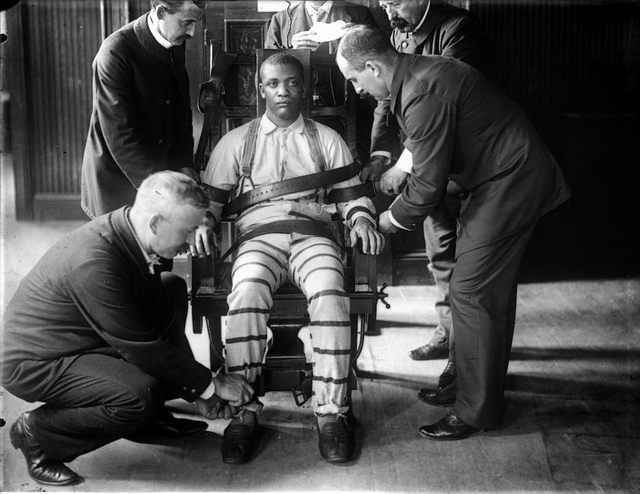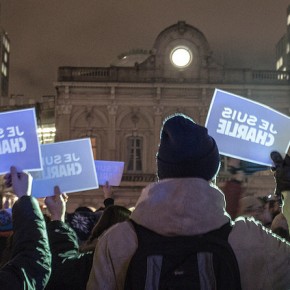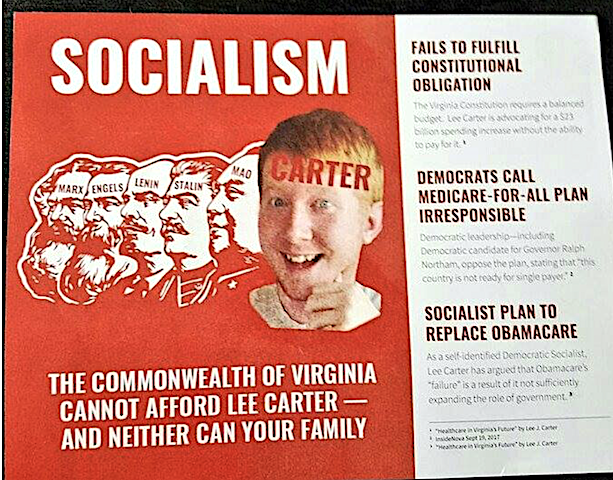America is one the last of the states in the West to practice judicial killing. Although the pace of executions doesn’t match up with the rivers of blood unleashed by China, or ISIS, the practice of liquidating offenders, and the buoyant enthusiasm that surrounds it, combine to evince a distinctly macabre state of affairs.
Capital punishment is deeply imbricated in issues of both class and race. If you don’t have the capital, you get the punishment, particularly if you happen to be black, and even more so if your victim happens not to be. But worse even than this, the persistence of the promulgation and employment of death penalty statutes amounts to a pure and prurient pursuit of political advantage.
The commitment to capital punishment is predicated on a particular state of mind, one that arrogates to oneself the right to decide who is fit to exist and who is not. As long as the decision to kill was taken using formally valid procedures, those involved need have no moral qualm in participating. This is particularly odd in a country the national identity of which is so thoroughly tied up with adherence to the teachings of Jesus Christ, the generally merciful tone of which would seem to preclude taking lives in vengeance.
Yet, although some versions of Christianity would follow Christ in demanding that one turn the other cheek when struck, others point to the fact that Jesus said that those who took up the sword would die by it, or that that people who curses his mother or father will “die without hope of reprieve”. Even the sixth commandment, so often rendered as “thou shalt not kill” more properly reads, “thou shalt not commit murder” (i.e. killing within the bounds of the law is acceptable) and, in any case, the commandments appear in the context of the eye for an eye morality of the Old Testament. Ultimately, participation in (or vocal support for) a state-sanctioned killing amounts to a giving unto Caesar what is Caesar’s, and so does not trouble the conscience of most American Christians unduly.
The positive justifications for the application of capital punishment illuminate the region in which petit bourgeois animus toward rule breakers generally intensifies into pathological hatred toward those who violate even more sacred norms. One does not have to search far to find people demanding death or catastrophic maiming for the perpetrators of property crimes. When the acts in question involve the killing of children or white adults, the two groups bearing the most value in the psychological makeup of the American petit bourgeoisie, the level of anger ramps up accordingly. A short perusal of the comments section of any story involving capital punishment in any major American newspaper will suffice to confirm this. Any hint of mercy toward, or concern for, the perpetrators elicits an immediate chorus of accusations of inhumanity toward the victims.
At the more measured ends of the scale, two justifications are generally offered. The killing of the perpetrator will right some cosmic balance, either by giving “closure” to the families of the victims or in simply metaphysical terms. The idea that a revenge killing (usually undertake more than a decade after the fact) could somehow have the effect of discharging some of the psychological pain of the loss is, at best, disputable. The idea that there is some sort of cosmic balance is risible at best, even for believers in the main monotheistic sects.

At the most reasoned level of argumentation, capital punishment is seen as a deterrent to violent crime. This claim is repeated like some sort of mantra, irrespective of the fact that there is not a shred of evidence to back it up. The rate of executions simply does not map on to the rate of violent crime. Thus, for instance, we find that the state of Texas, which leads the nation with over 500 executions since 1976, has been and remains one of the more crime-ridden and violence-prone states in the country, and although violent crime has declined there (as it has across the country) it has done so by very much less than the national average.
The FBI Uniform Crime Report for 2013 shows that the south, which accounted for 80% of executions in the United States, also had the highest rate violent crime. A fallback position for proponents of this line is that the process is so drawn out by appeals and other delays that the connection between the crime and the punishment is lost. In the first place, this assumes a level of rational calculation and self control on part of people, most of whom are poorly socialized or addled by drugs and alcohol or both, which is, to say the least, unrealistic. But since this is a matter of the neurotic lower bourgeois transferring his or her own capacity for self-legislation (or what they wish it to be) all scientifically-based criticism of unmediated free will comes off as mere excuse-making.
But it is not simply a matter of the death penalty being unjustifiable in terms of social policy. It is, in fact, deeply pernicious. The vast majority of defendants are represented in a life or death proceeding by the cheapest council money can buy (or that the state can provide). This in and of itself would have made it statistically certain that innocent people were being put to death, even before the Innocence Project began effecting the exoneration of two or three people per year. One can only imagine what the toll must have been before DNA evidence, but for the proponents of capital punishment that gruesome heritage is water under the bridge. What matters now is the punishment of the next offender. If the wheels of justice can just be made to operate more swiftly (if not necessarily more surely) then the policy will have the desired effect.
If poor representation and exonerations do not sway opinion, the obvious racial inequality is hardly more likely to in a country in which the value attached to black and brown lives is at a very low ebb. African Americans make up 40% of death penalty recipients, although they make up only 10% of the population. Only 31 whites have ever been executed for killing blacks, while blacks have been executed nearly 300 times for killing whites. Even adjusting for the fact that blacks are heavily overrepresented among the ranks of the poor, they are still disproportionately subjected to the supreme penalty, as they are disproportionately subjected to practically every other as aspect of the US carceral system.
Given the current obsession among many in the American political (and chattering) classes with austerity, one might think that the fantastic expense associated with death penalty proceedings might dampen some of the enthusiasm for them. The state of California alone has spent more than $4 billion since 1978 on death penalty cases. A study in Kansas found that capital cases were four times more expensive than those in which the death penalty was not sought. The state of Florida routinely spends $51 million per year on death penalty cases without achieving any appreciable reduction in the rate violent crime there (over and above the general downward trend for the country as a whole). The response to this from death penalty supporters is that the process needs to be streamlined, with the prospect of executing further innocents apparently relegated to the status of collateral damage.
Ultimately, support for the death penalty is about politics. In the eyes of politicians, murderers and rapists are a bit like the tobacco companies: a group that it is easy to get people together on hating. There is, at the same time, no upside to coming out in support of any kind of leniency. In the world of electioneering since George Bush’s infamous Willy Horton ad campaign in 1988, politicians in the United States know better than to expose themselves to the possibility of being hammered as soft on crime.
Although a 2010 poll by Lake Research Partners found that 60% of American voters would prefer some other penalty rather than death for murder, seeming to be tough to the point of mercilessness is a way of currying favor with that very vocal slice of the US electorate who are fascinated with MMA fighting and think that the head injury protections in the NFL are “pussifying” the game, and who tend to vote in large numbers in conservative primaries.
The need to extract political advantage out of the process goes a long way to explaining the obsession of American politicians and prosecutors with the death penalty. As the case of Charles Warner (executed on the 15 of January in Oklahoma) shows, even a request by the mother of the victim was not enough to dissuade the justice system from exacting its price. But for a stay by the Supreme Court, Georgia would already have executed Warren Hill, whose severe mental retardation would have made him (in light of the Supreme Court’s ruling in Atkins v. Virginia in 2002) ineligible for execution anywhere outside the South.
The state of Texas is still intent on executing Scott Panetti even though he is floridly psychotic and treated potential jurors at his trial to a monolog on his “Injun beliefs as a shaman.” Antonin Scalia, admittedly only the second nuttiest member of the court, is on record as holding that the Supreme Court, “has never held that the Constitution forbids the execution of a convicted defendant who has had a full and fair trial but is later able to convince a habeas court that he is ‘actually’ innocent.” Apparently executing the obviously insane also falls under this procedural consideration.
Murder is a horrific crime, and merits severe punishment. But the death penalty is too imbricated both in the class and racial politics of the United States, and in the cynical desires of politicians and prosecutors to achieve immediate political advantage. It is not the lot of men to be certain, and given that that is the case, the death penalty represents a danger to the innocent, the significance of which must outweigh other considerations, particularly the needs of elected officials.
In a country riven by class and racial conflict, capital punishment all too easily becomes the ultimate tool for the policing of already marginalized groups, who are once again made to foot the bill for the needs and desires of the men who run the show.
Photographs courtesy of Recuerdos de Pandora and Wikimedia. Published under a Creative Commons license.





